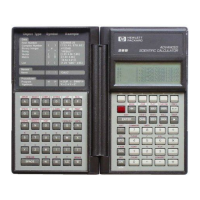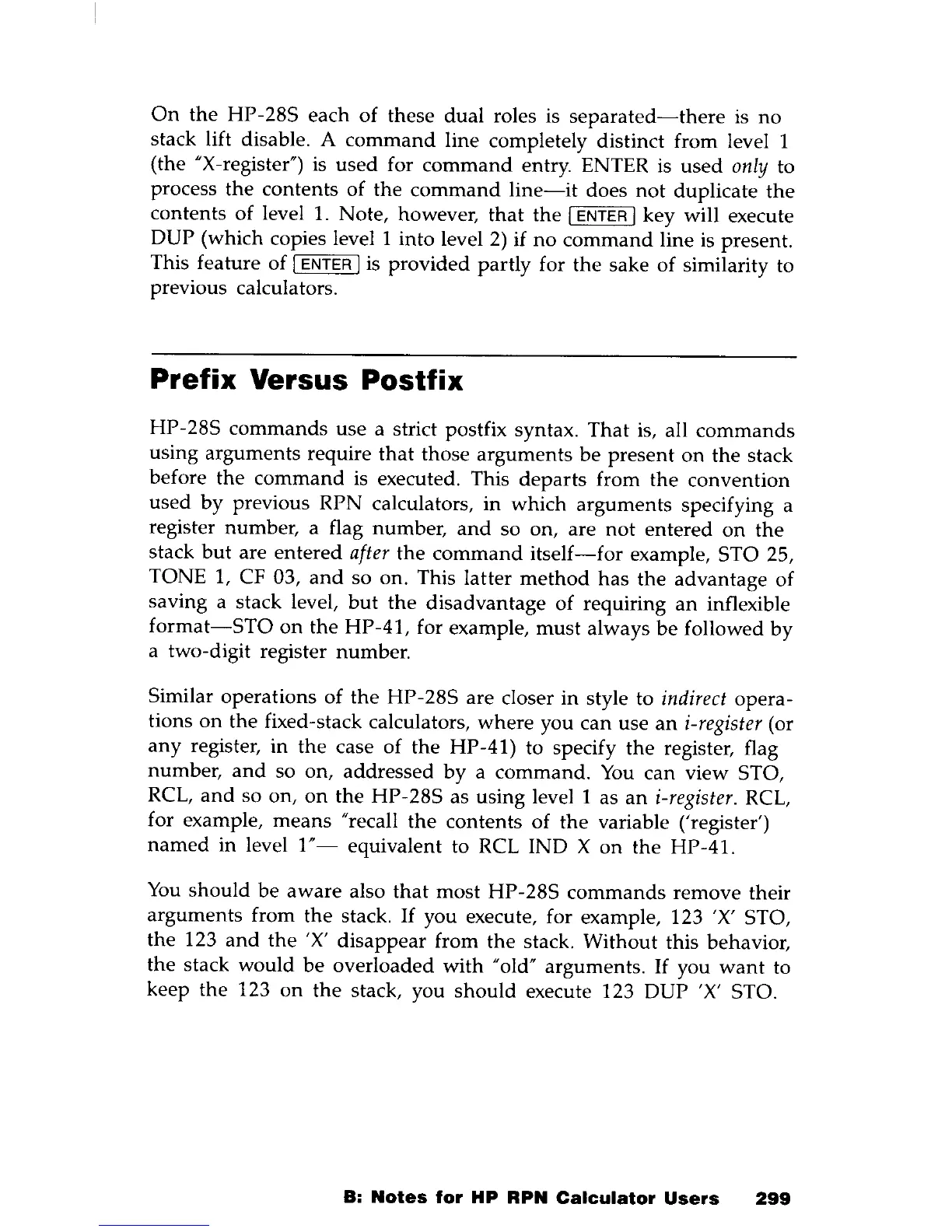On
the
HP-28S
each
of
these
dual
roles is
separated-there
is
no
stack lift disable. A
command
line completely distinct from level 1
(the UX-register
U
) is
used
for
command
entry. ENTER is
used
only to
process
the
contents
of
the
command
line-it
does
not
duplicate
the
contents
of
level
1.
Note, however,
that
the
I ENTER I key will execute
DUP
(which copies level 1
into
level
2)
if
no
command
line is present.
This feature
of
I ENTER I is
provided
partly for
the
sake
of
similarity to
previous calculators.
Prefix
Versus Postfix
HP-28S
commands
use a strict postfix syntax.
That
is, all
commands
using
arguments
require
that
those
arguments
be
present
on
the
stack
before
the
command
is executed. This
departs
from
the
convention
used
by
previous RPN calculators, in
which
arguments
specifying a
register number, a flag number,
and
so on, are
not
entered
on
the
stack
but
are
entered
after
the
command
itself-for
example, STO 25,
TONE 1, CF 03,
and
so on. This latter
method
has
the
advantage
of
saving a stack level,
but
the
disadvantage
of
requiring
an
inflexible
format-STO
on
the
HP-41,
for example,
must
always
be
followed
by
a two-digit register number.
Similar
operations
of
the
HP-28S
are
closer
in
style to indirect
opera-
tions
on
the
fixed-stack calculators,
where
you
can
use
an
i-register (or
any
register, in
the
case
of
the
HP-41) to specify
the
register, flag
number,
and
so on,
addressed
by
a
command.
You
can view STO,
RCL,
and
so on,
on
the
HP-28S
as using level 1 as
an
i-register.
RCL,
for example,
means
urecall
the
contents
of
the
variable (,register')
named
in level r - equivalent to RCL IND X
on
the
HP
-41.
You
should
be
aware
also
that
most
HP-28S
commands
remove
their
arguments
from
the
stack.
If
you execute, for example, 123
'X'
STO,
the
123
and
the
'X'
disappear
from
the
stack.
Without
this behavior,
the
stack
would
be
overloaded
with
uold
u
arguments.
If
you
want
to
keep
the
123
on
the
stack, you
should
execute 123
DUP
'X' STO.
B:
Notes
for
HP
RPN
Calculator
Users
299

